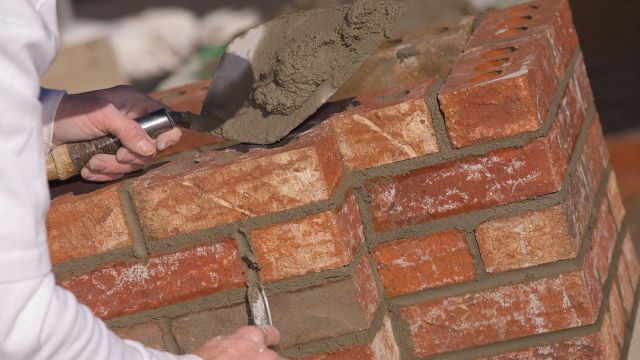Rebuilding our future
Workforce development
There seems to be good news on the horizon. There are pockets of our economy that are seeing a nice rebound. Areas that have not seen a terrific rebound commercially have seen an increase in the amount of work to bid.
While the margins have not increased all that much just yet, as the markets pick-up, that will be a natural progression. The best indicator that better days are ahead is that the housing market, in just about every part of the country, has had a substantial pick up.
All this great news will present challenges for our industry. The construction market has been deeply depressed since 2008. The downturn has lasted a minimum of five years. During that downturn, our industry began to purge our workforce and our apprenticeship program network.
While this was a natural progression of our downturn, what it has presented is what will likely be a severe shortage of labor in our industry. Already in the housing market, there are stories of homebuilders needing to slow their rebound, due to the lack of labor to build homes. Stories of homebuilders having auctions and lotteries for available homes already are surfacing.
About three years ago, the MCAA Board understood the need our industry would be facing in the future. As a result, the board decided it was time to seriously look at and develop a plan for rebound. The first thing we did was determine that the apprenticeship series we were using was outdated and in dire need of update.
Instead of re-vamping our own program, we looked to other good, quality programs that we could support that were capable of being an excellent national program for our industry. That brought us to the National Center for Construction Education and Research (NCCER). The Masonry Association of Florida (MAF) had developed an excellent program that brought them to the forefront of construction recruitment and training in their state, and it’s the best program I have seen nationally.
The MAF had developed a program that uses the NCCER program for apprenticeship and high school training. On the high school level, they became the go-to organization for the state in regards to overseeing the vocational education in many of the high schools in Florida. Services to audit high school vocational records are provided on behalf of NCCER to verify compliance with NCCER credentialing of their program.
As a result, fees associated with these audits were developed, and now audit all construction vocational programs, not just masonry. The MAF also became the source for registering students in these high school programs in the NCCER database and maintains their transcripts for credentialing purposes. They get a fee to register the students.
Lastly, the MAF became a training resource for the high school instructors. They provide training programs for the vocational instructors that teach them how to use the NCCER program and track student progress within the system. This education is paid for by a Perkins Grant and has been very popular among the instructors.
All of this work took a lot of effort on their part, and much has been done politically to get the state of Florida to give incentives to support vocational training in high schools. It has taken them years to develop this program, and what that high school program has now produced for them is a six-figure revenue stream that pays for their entire apprenticeship program, which even through the recession has been resilient.
About two years ago, the MCAA and MAF, through the support of the National Concrete Masonry Foundation, began to develop a model program for other state groups to use to develop their own programs.
This information should shave time off any future program development, as they will now have a road map of how to implement the program. Last year, we began a pilot program in Arizona. This fall, we look forward to adding Colorado to the program (thanks to the Rocky Mountain Masonry Institute) and, in January 2014, the UT Masonry Council is planning to model this program in its state.
In addition, this fall, the MCAA will hire a coordinator for high school activity in the state of Kentucky. Their state Department of Education is looking to implement a program similar to what the MAF has developed for Florida. We plan to implement the model in Kentucky, and then have this person work with other states looking to develop model programs.
I would encourage other folks who are concerned about their workforces to contact me at the MCAA to see how we can help bring this program to you. We want to see our workforce of the future develop and grow today. We need to prepare for our future, or we will be our own worst enemies as we come out of the recession.
Workforce Development Interesting Facts
NCCER is in the process of re-vamping its masonry curriculum. Year 1 will be available this fall, and Years 2 and 3 will follow in successive years. The program is reviewed and developed by subject matter experts from all over the country.The MCAA developed a student membership earlier this year. The membership is $25 and is available to apprentices who are learning the trade. The membership is intended to expose them to the masonry industry.
Skills USA just finished its National Competition in Kansas City, Mo. Masonry was well represented by both secondary and post-secondary apprentices from all over the country.
The National Masonry Instructors Association just held its annual convention in Concord, N.C. They installed three folks into their Hall of Fame. Congratulations are extended to th 2013 inductees, retired Aiken, S.C., masonry instructor Willie Leaverett; long-time executive director of the Brick Industry Association-Southeast Division of Charlotte, Pete Cieslak; and retired masonry instructor Max Randolph of Rock Hill, S.C., schools.
The MCAA just released an opportunity for instructors to utilize the MCAA’s recorded webinars as resources in their classrooms. There is no fee for instructors if they are MCAA members and have 25 student MCAA members. Visit www.masoncontractors.org/join for more information about membership.
About the Author
Jeff Buczkiewicz is the President and CEO of the Mason Contractors Association of America. Jeff has worked in the masonry industry for several years as the Executive Vice President of the Building Stone Institute and the Director of Marketing and Membership for the Mason Contractors Association of America. Jeff has also served as Secretary on the Board of the Natural Stone Council and is a former Board Member of the StonExpo Federation.



















